How can you stop carpenter bees? There are different ways to stop this problem – fluid poisons, sprays, and baits. But, the matter is that wood bees prefer to live alone – so mass poisoning will not be very effective.
That’s why the best way to eliminate carpenter bees is to use traps. Wood bee traps may vary – homemade and professional, ordinary and original. By reading this article, you will know how to make a trap yourself and choose the most effective ready-to-use one on the market.
The University of Florida IFAS Extension experts approve of this control method although they claim it’s best to use several traps simultaneously.
However, the University of Kentucky specialists warn that the traps are probably most effective early in the season when the bees are establishing their sites and where bee numbers are relatively low.
{code 416}
If you don’t manage to hang the traps in time, you’ll have to treat carpenter bees and their nests with insecticides. That is why we’ll first tell you about the traps. But if you are reading this in summer or fall, scroll down straight to the TOP-6 Best Carpenter Bee Killers section.
Table of Contents:
The 3 Best Carpenter Bee Traps: Wooden and Sticky Traps
Not everyone has “golden hands,” or enough time to make a carpenter bee trap. There are two types of ready-to-use traps that are really effective: the first is wooden traps with a glass or a plastic bee collector and the second – sticky traps without any collectors for dead insects. We have collected 3 typical products of both types.
Carpenter Bee Trap
The bee collector is made up of wood and glass and the fitting represents a metallic chain, thus increasing the mounting reliability. The manufacturers offer several “upgrades” of the product, with which it can be turned into a trap for wasps and “yellowjackets” as well. The point here is a bait recipe which includes 1 inch of soda and 5 drops of soap… But this bait is not necessary for carpenter bees.
Mac’s Carpenter Bee Trap eliminates wood burrowing bees from destroying your home or property. This trap mimics the natural nest of carpenter bees making it more attractive to them, and thusly you will catch more bees. It is also recommended for this trap to work, place it fairly close to where the action is and, fill the jar approx. 1/2 way with water and add a drop or two of dishwashing liquid. This will keep the bees from escaping.
{code 693}
Price: Check the current price
Best Bee trap Carpenter Bee Trap
А carpenter bee trap with a slightly different design specifically targeting carpenter bees. The trap replicates the design of a natural nest to lure the carpenter bees inside. The dead carpenter bees that collect in the trap will release pheromones which attract other carpenter bees to the same trap. No need to replace plastic bottle, when the trap is full, this design allows you to simply open the bottom plastic container to empty the trap of dead carpenter bees.
Hang the trap where the carpenter bees are actively making holes in your home. it is recommended to use an attractant such as Donaldson Farms Carpenter Bee Trap Lure or another option is to put a dead carpenter bee in the bottle. Remember those pheremones are powerful attractants!
{code 693}
Price: Check the current price
Rescue Non Toxic TrapStik

It attracts wasps as well as carpenter bees with its unnaturally bright color. Insects take it for a large and appetizing flower, fly into, sit on special glue… and stay there forever. Besides, the sticky base doesn’t dry out whether it is cold or hot. The product is water resistant and can hold more winged victims than small bee collectors.
The targeted insects are naturally lured to the trap without odors, chemicals, or wasp sprays. So that is great for anyone who is worried about using insecticides especially around children and pets. This lure does have a cage around it to protect birds, but it still may attract beneficial species as well, such as honey bees and various wasps. Something to consider.
{code 692}
Price: Check the current price
Essential Reading: How to Get Rid of Wasps
We’ve talked about three carpenter bee traps. These traps are good enough (each trap is effective in its own way), but they are typical – you may use these or choose something else from the category of carpenter bee traps.
Carpenter Bee Traps Comparison Chart
| Product | Brief description |
| Carpenter Bee Trap |
The bee collector from is made up of glass and the fitting represents a metallic chain, thus increasing the mounting reliability. |
| Best Bee Trap | This wood and plastic bee trap can help you in the fight against nuisance carpenter bees. |
| Rescue Non Toxic TrapStik | It attracts wasps, flies and bees with its unnaturally bright color. Insects take it for a large and appetizing flower, fly into, sit on special glue… and stay there forever. |
Top-6 Insecticides to Get Rid of the Carpenter Bees in Their Nests
California University entomologists recommend getting rid of them with the help of dust poured down the nests or tunnels. Apply dust formulations of insecticides or desiccant dusts into nest holes with a bulb applicator. Dusts containing pyrethrin (Drione Dust), borate or disodium octaborate tetrahydrate (Tim-bor), and pyrethroids including deltamethrin (Bonide Termite and Carpenter Ant Dust) and cyfluthrin (Tempo Dust) are currently labeled for use against carpenter bees.
Dusts
Manufacturers don’t produce special dusts for carpenter bees, but you can use termite or carpenter ants treatment. You can pick any producer you like, such as TERRO or Bonide, as their products contain deltamethrin.
 Both Bonide and TERRO are board action insecticides that kill on contact. All you need to do is pour any of these waterproof dusts into the tunnel and wait for it to act. Deltamethrin has repelling residual effect but Bonide’s dust’s lasts longer (for up to 18 months) because of the insecticides higher concentration of 0.5%. 0.05% of the active ingredient in Terro’s treatment will only provide 8 months of repelling.
Both Bonide and TERRO are board action insecticides that kill on contact. All you need to do is pour any of these waterproof dusts into the tunnel and wait for it to act. Deltamethrin has repelling residual effect but Bonide’s dust’s lasts longer (for up to 18 months) because of the insecticides higher concentration of 0.5%. 0.05% of the active ingredient in Terro’s treatment will only provide 8 months of repelling.
Price: Bonide Dust: Check the current price
{code 691}
Price: TERRO Dust: Check the current price
Try to spray the dust as deep down the tunnel as possible. A Powder Duster will help you.
{code 690}
Professional insecticides
If the infestation area is great, use professional insecticides in huge packs. Here are two such products: Tim-bor Professional Insecticide and Fungicide. The former 98% Disodium Octaborate Tetrahydrate insecticide is to be dissolved in water and the solution should be used for treating the wooden surfaces loved by carpenter bees, such as fences, decks, steps sheds and other out buildings.
Drion Dust, contains 1.00% of pyrethrin and is ready-to-use. Pour it down the bee tunnel immediately and anywhere these pests are found. Drion Dust promises to retain its killing effect for 6 months after treatment.
{code 688}
Price of Tim-bor insecticide (1.5 lb bag): Check the current price
{code 689}
Price of Drion Dust (1 lb): Check the current price
Carpenter Bee Killer Foam
If you don’t like dealing with dusts, try foaming the nest with Bayer Advanced Termite and Carpenter Bee Killer Foam. This foam is aimed at eliminating carpenter bees, termites and other insects. The product’s active ingredient is 0.05% imidaclopride that impacts the insects’ CNS leading to paralysis and death. Bayer Foam will be appropriate not only for getting rid of carpenter bees in the tunnels, but also in other inaccessible spots as it can increase 30 times when sprayed and penetrate any cracks.
{code 687}
Price: Check the current price
The Ohio State University experts give a great tip: Wood that is painted or coated with an oil stain can help, but not always. I prefer using a pyrethroid like permethrin to spray on the wood. As with most insects, they really dislike this and move on.
As you remember, permethrin is a universal insecticide aimed at getting rid of many types of insects, including carpenter bees. That is why a canister will last a long time for getting rid of almost all pests (mosquitoes, termites, ants etc.).
You can buy any brand of the substance, such as this 36.8% pure permethrin – Permethrin 36.8% permethrin Quart 6666105.
All you need to do is to dissolve it in the water according to the manual and treat the places that are infested: façades, basements, around home areas, sheds, and barns, lawns, landscapes, ornamentals. This concentrate can be also used inside and around wooden birdhouses if the carpenter bees have happened to settle there. If needed, pour the solution down the bees’ nest (tunnel).
{code 686}
Price: Check the current price
Best Carpenter Bee Killers Comparison Chart
| Product | Active Ingredient | Effectiveness/Action |
| Bonide 365 | 0,5% deltamethrin | Pour the dust into the nest and tunnels. Effect lasts for up to 18 months |
| TERRO 600 | 0,05% deltamethrin | Pour the dust into the nest and tunnels. Effect lasts for up to 8 months |
| Harris Duster | – | A plastic duster |
| Bellows Hand Duster | – | A metal duster |
| Tim-bor | 98% Disodium Octaborate Tetrahydrate | Dissolve in water and treat the infested area or pour down the tunnel |
| Drion Dust | 1% Pyrethrins | Pour the dust into the nest and tunnels. Killing effect lasts for up to 6 months |
| Bayer Advanced | 0.05% imidaclopride | When used the foam takes up 30x more space |
| Permethrin | 36.8% permethrin | Is suitable for treating infested wooden buildings |
{code 5}
Why are carpenter bees dangerous?
1. They can still bite. Female bees can sting a person, but scientists from Alabama A&M University and Auburn Universities are saying “(they are)Not a stinging hazard unless handled”. So don’t try to catch or kill these insects using hands.
2. They destroy buildings. Tunnels made by these insects cause a lot of damage to wood. Entomologists from The Kansas State University explain that “excavation proceeds slowly, at the rate of about one inch per week in old, softwoods”, but for some years of active work, these black and yellow fellows can turn even thick planks into dust.
About other wood destroyers: How to get rid of termites
3. They attract woodpeckers. The larvae of bees are the favorite dish of woodpeckers. They are able to feel this delicious food at a moment and begin to get bees’ babies out of the wood. This harms the wood more, though.
4. They multiply greatly. A mature bee can give birth to 6-8 babies in one summer. A male bee can impregnate several female bees several times… So, judge for yourself: One safe and sound bee is able to multiply its kin in just a single warm season.
Top 10 Facts You Must Know Before Taking on Carpenter Bees
Carpenter bees (wood bees) are not the best neighbors of humankind. In late spring, they appear at our houses, frighten our children by their aggressive behavior, and – what is more important – destroy our premises. Besides, wood bees have a sort of “generation memory,” and they return to the wood chosen by their parents over and over again.
1. Carpenter bees have over 500 species and are the most common kind of bees.
2. These insects generally drill holes in dead wooden logs, wooden structures, and even bamboo.
3. The bees do not eat wood. They only make holes to lay their eggs.
4. Carpenter bees drill into wood by making a perfect circular entrance visible on the surface of the wood. The hole may reach up to 16 mm in diameter.
5. A carpenter bee is easy to be confused with a bumble bee. They are very much alike. But carpenter bees do not dig burrows in ground. Besides, their bodies are bigger and not covered by fluff.
6. Bee “husbands” do not have a stinger, and can’t bite. But they frighten people most often – they whirl round them and attack. Female bees stay in the wood most of the time. The problem is that they “chew” passages and lay larvae. How to Identify male carpenter bee: Millie Davenport from Clemson University explains that male carpenter bees have white heads unlike female ones. So if you see this white spot you’ll know that this insect can’t bite you.
7. Wood bees are not social insects. They live by their own and might be eliminated one by one.
8. Invasion of these insects usually occurs at the end of spring: They lay larvae in May or June. In August, their babies make an appearance.
9. Their tunnels “look at” the sun. These insects rarely dwell at shadowy side of the house.
10. Bees prefer unstained conifers, such as red trees, cedars, cypresses, firs, pines. Scientists from the University of California Agriculture & Natural Resources claim that carpenter bees avoid most hardwoods.
Homemade Carpenter Bee Trap
Well? Have you decided to exterminate these pests? To start, let’s try to make it with our own hands.
Wood Bee Trap Plans
Building a trap for these insects doesn’t involve any rocket science. It does not involve any electrical engineering or complex mechanical work.
The basic principle of a carpenter bee bait is based on the fact that these big black bees tend to drill into an already existing hole in wooden structures. The ready trap has holes on each side, and this sight lures carpenter bees.
Once the insects have entered this box through one of these tempting holes, they will move towards the light spot at the other end (another instinct of the insects of this sort). And following the light, the insects would end up inside the carpenter bee catcher. The following is a manual on how this trap can be made.
Building Wood Bee Trap: Instruments
To get rid of wood bees, we need the following instruments to make up different traps:
- A soda/water bottle
- A plastic bottle or jar with a screw-on lid
- Some wood remnants
- Screws
- A saw (preferably a circular saw, such as Skil)
- An electric drill for making holes
- Nails and a hammer (medium sized)
5 Simple Steps of Bee Trap Making
Once you’ve got the tools, try the next simple steps to make up the trap for carpenter bees:
- Using a saw, cut 4 wood pieces of equal size (about 10 inches long).
- With the help of a hammer and nails, fix these wooden pieces in the form of a rectangle.
- Place a piece of plywood on the rectangle shaped wooden structure you’ve just made, so it will hang over it.
- Drill holes of at least 16 mm diameter in the wooden structure (on all four sides, in the upward direction).
- Attach the bottle to the box by inserting the neck of the bottle in the box through one of four holes. Done!
{code 416}

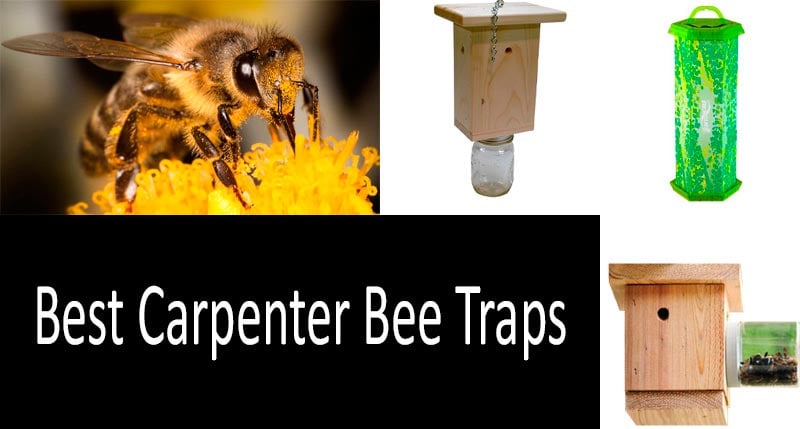




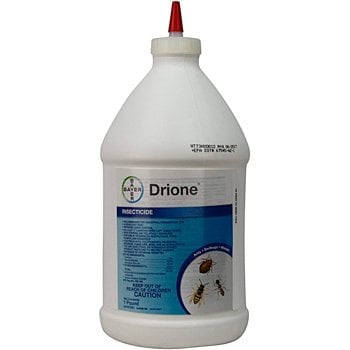


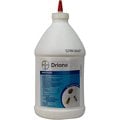
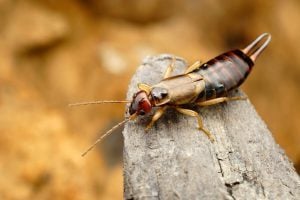

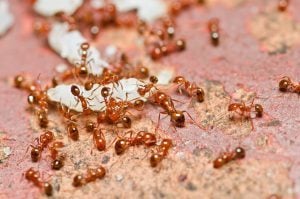

15 thoughts on “How to Get Rid of Carpenter Bees: Top-3 Best Carpenter Bee Traps”
” Wood bees are anti-social. The live by their own and should be eliminated one by one.”
False. I see youve never actually sat and WATCHED them! Several go into one hole. Ive seen this by using Spectracide spray in multiple holes and watching the results. Usually SEVERAL are killed from one hole (they crawl out after being sprayed), and additional ones come in from outside to that same hole.
“Luckily, the struggle against carpenter bees doesn’t require using poisons and chemicals.
False. It takes several approaches, because these pitiful traps only catch a couple bees. Most of them go back to the same tunnel. Its their home.
Its necessary to spray their holes, put up traps and manually kill them when they visit colorful flowers and bushes to catch the ones that come in from outside your property to feed at the flowers/bushes.
This passive method of a trap will NOT be effective at eliminating them, especially if more come in from outside your property, for example, from the neighbors or surrounding woods with dead trees. The couple caught in the trap does nothing to deal with the HUNDREDS of them that dont fall into the trap.
Its not only necessary to spray in their holes with chemicals, to kill most of the ‘regulars’ but to spray the wood around the holes (entire length of board, for example) so that they will ‘eat’ some of the spray, or smell it, when they come back to their hole and find its been doused with chemicals (Ive stood and watch successive bees come to the same hole that I had just sprayed, which usually kills several, and hover near the hole, then fly away when they ‘smell’ the chemical.) “Fly away” leads to ” go somewhere else near your house and make a new hole.
You are quite wrong. One (of 4) trap I built caught 6 bees within 8 hours of hanging it near a corner of my house. My house has log siding and is stained.
Carpenter bees love to bore through stained wood or just plain weathered wood. Location of the traps could be crucial. If one location does not attract the bees, hang it somewhere else. Under eaves might work.
My observation is the traps only catch males hunting a hole for the night. Females wont let them into their nest hole at night, but they will let other females in.
Dear, me, sorry, but you’re wrong.
1. Carpenter bees resemble bumblebees in both size and appearance, but are not social insects. The Pennsylvania State University, http://ento.psu.edu/extension/factsheets/carpenter-bees
2. Carpenter bees are traditionally considered solitary bees, though some species have simple social nests in which mothers and daughters may cohabit. https://en.wikipedia.org/wiki/Carpenter_bee
Does anyone have any working carpenter bee trap plans? I faced the problem long ago, but I only recently have had a chance to deal with it.
You can find awas bunch of them online. Just google diy carpenter bee trapand you’ll find lots of them. You’d better use Chrisman Mill Farms Wood Bee Trap than ahandmade one though.
How to make a carpenter bee trap? I tried very hard, but nothing happens and carpenter bees simply do not fly in. I also used loads of bait, but it all gives zero results. Do you guys have any recommendations?
I used to be the Bees N Things carpenter bee catcher together with a trap and saw positive changes. But it is definitely overpriced.
How to trap carpenter bees? Which bait to use?I wanted to use bait containing a gram of soda and five drops of soap, but I changed my mind as I read that this kind of bait is not quite proper for carpenter bees.
In a soda bottle or Ball jar carpenter bee trap there is no other bait necessary. The 1/2″ entry hole is all that is needed. Once the first bee is caught it will release pheromones that will attract more carpenter bees, but no bait is needed to catch the first bee. My experience was that it took a day or two before the first bee entered the trap, but after that the second and third bees were caught within a matter of hours. Carpenter bee traps are easy to make with items most rural folks gave on hand. Nothing fancy is needed. The only suggestion I can make is an untreated piece of 4×4 might work faster than a pressure treated one, although all my traps were made of pressure treated wood, and work just fine.
Are there any mason jar carpenter bee trap plans? Or are they standardly made of wood and plastic?
Plans are pretty basic. You need a 4 x 4 block of wood about 6 inches long. Drill a 3/4″ hole at one end. Then using a 1/2″ bit, drill holes at a 45 degree angle from the bottom leading into the 1/2″ hole. Mount a mason jar lid at the end with the 3/4″ inch hole and drill a hole through that. Screw the jar onto the lid. Then screw a hook into the other end and hang up where the bees are. The bees will crawl through the 1/2″ holes into the larger 3/4″ tunnel, and then down into the jar.
I think it’s easier to buy a ready-made trap. This will save your time and nerves 🙂
I disagree that c-bees only drill holes that “look at the sun.” We have 2 covered porches — one on the north side & one on the south side and peaks on the east & west sides of our house. The north side has 6 entry holes and the south has 3. The east & west sides had holes before we painted the trim prior to serious spring activity began. No known new entry hole in all 4 sides. Now we do self-spray the entire house trims monthly – thus reducing any new holes dramatically. Few bees in traps.
My neighbour grows flowers on the street, he has a whole garden, but I do not like it, because he has a lot of bees flying, and sometimes they fly to us, it’s annoying, and once she bit our baby! Mockery! How can you get rid of these bees? I was already tired of the daily war for a safe yard!